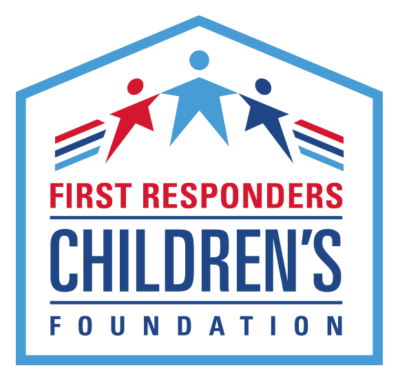Oct 1, 2020
A Living Room Concert and the Love for Text to Donate

 Scott Perrin from New York’s First Responders Children’s Foundation tells us how they landed an iHeart Radio living room concert, why people love text-to-donate, and how they’ve worked over the years to give their donors what they want.
Scott Perrin from New York’s First Responders Children’s Foundation tells us how they landed an iHeart Radio living room concert, why people love text-to-donate, and how they’ve worked over the years to give their donors what they want.
The following is a transcript of our Q&A conversation from our #OutsideTheRoom Fundraising Success Series – Episode 2. Watch the full episode here.
Can you expand on giving fundraisers their own Givesmart page? Scott how hard is that?
Scott Perrin: Yes, that’s a piece of cake. So when I get to talk with somebody about they want to do a fundraiser, I say “they want to you know have a mud wrestling competition okay terrific that sounds great. Please just send me a picture and a write up like three sentences”. They send that to me, I open a new Givesmart page, throw in their picture, throw in our logo, throw in their write up, add you know anything you want to add and press go and they’re ready to go. And I send them an email I’ll say “hey your page is up! Here’s the address, here’s the text of a word for your campaign” and they’re off and running it’s that simple.
So, you also mention Scott not breaking any laws which is actually a great question. You know the thing about like you can do raffles in some states and not others. But do you get involved with the specific small games of chance, license liquor license requirements state-by-state? How do you handle that?
Scott Perrin: That’s a great question. And I have been around long enough to know the dangers in that. I know that certain states have issues with raffles, but other than that I know that our foundation is licensed in every state through the regular licensing. We have a consultant that handles it. So that’s good thing to bring up. I mean if you’re only operating in one state, I would be sure that it’s legal for you to raise money in another state. It’s not rocket science anybody could do it just register with the Secretary of State. It’s a little easier if you have the budget to a consultant to do it for you but it’s not a rocket science. And that’s a necessary ingredient.
And then under that umbrella, do you also address the insurance or liability issues with the organization that is hosting the benefit?
Brandon Stec: So, you know if it’s something odd like we once I mentioned that we had a gun raffle and our bar board was very concerned. So, we had them have something in writing that said we were not responsible they were, and we proceeded. But the gun raffle happened to be run by a first responder training group where they trained like SWAT teams to do stuff. So, they knew what they were these are. The world’s professionals doing with guns not that I’m not saying pro or anti-guns, but they were experts and professionals, so it wasn’t an issue. But we try and just be beneficiary. We don’t execute any of the events we just received the money.
That’s an excellent plan. Can you talk about text to donate Scott and how that’s worked for you and all these campaigns?
Scott Perrin: Sure. Well the biggest thing with that for me is that people love text-to-donate. They love the concept of it. They love to do it. I would love to know statistics I’m like what the money is I don’t know what that is, but people do love it. And we find that when we create these little mini campaigns for people, we say “Here’s the website, here’s the text to donate”. Their draw hits the floor they’re like wow that’s so cool and it only takes a couple of minutes.
Patrick Clore: I think though one thing to add on and we will if we haven’t built so already, we can include a link to the kind of campaigns that Scott’s team ran during the concert that we talked about. Because I think it gives a good example and actually if we just put in the chat instead I will type in here myself and kind of for anybody paying attention if you just text the words “thanks to 7682”. You can kind of go through the pathway and see it for yourself which is the same process that the donors had. But I think one thing that Scott has said is we weren’t sure. Hey, are they going to put this on the screen and things is putting it kind of pinning it on the tweet which I know is one of the examples we had in that slider or making it very visible. And so, each platform based upon your vendor is going to be unique in our system. You have a short code and a key word so thanks is the keyword that Scott’s team had set up making it something easy. “Thanks” is pretty straightforward hard to misspell that even for myself. And making it so that you kind of plaster that everywhere and just make it as simple as always and I think Scott said it beautifully. You want to make it easy for people to get and so we have every sort of statistic that talks about text message open rates in comparison to email rate. And the benefits of doing SMS and things of that nature. But I think more than anything, Scott’s teaming to get a great job to encourage anybody to do it because you can do it on a zero-dollar budget is just put it out there and put in a way that people can see it. And with three clicks or less, they can make a donation from $1 all the way up to 50,000 and beyond.
Scott, this is a question that we get almost every week. What are your thoughts on the current pandemic and of course the economic situation? Are people still wanting to give? Is that unique to your organization? What’s the sense you’re getting from folks?
Scott Perrin: Let me tell you something. Don’t take it from me, take it from the front page of today’s New York Times were there is an earth-shattering article about the top five wealthiest foundations in America who are not only agreeing to all give more money than ever before in their history. Some of them are borrowing you heard me right, they’re borrowing money to give out more money right now. Back in the day people never used the money and you can read about in today’s New York Times front page. But back in the day foundations did not give away so much money. There was no incentive to. The bankers wanted all the money they could to stay in the bank. The board members wanted to not give away the money. If they gave away the money they wouldn’t be on a board and the staff didn’t want to be out of a job. They wanted to keep the money and they passed a law which I’m sure everyone on this call knows that you have to spend at least 5% of the foundation money every year. It’s not a floor it’s a ceiling of what they spend right now, but the world is changing radically in many ways as we all have seen. And one of the crazy ways is that there’s lot of foundations that want to give away money. Nobody has a crystal ball or knows what this year going to hold but I think there’s great potential. Because everyone realizes that even if you are something that has nothing to do with Covid, you’re desperate to continue your programming. And I would read the New York Times honestly, it’s an amazing article.
It’s interesting because one of the things that we’ve been hearing since mid-march is yet people still seem willing to give but that’s going to end and here we are nearly three months later and this is what we’re hearing from folks on the front line. So that’s really powerful.
Patrick Clore: So once a lifetime experience world on right now, truly.
None of us know the playbook, right? Patrick, question for you. Do you have any analytics on the impact of video for virtual auctions? Any marked increase in funds raised with the addition of a virtual gala video?
Patrick Clore: That’s a great question. We’ve seen a good amount of things. The number one thing that we have been able to tie a direct correlation to is an impact story or a donation impact moment within a video be it a standalone video or included within kind of a virtual setting. What I meant by that is whether it’s having an individual who have benefited from the organization, speak or send a video about what the funds have contributed or doing some sort of whether it is a PowerPoint video. Whatever the case might be kind of showing that “hey if you are a donor and your contribution of X here’s going to allow our organization to do”. Far and away, that’s the number one thing that I would shout from the rooftops for people to do because I think if I’m willing to give I want to know what is going towards and so I think making it very apparent of what the mess what those funds are going to be impacted to. I think is great and then with videos and things like that I think making sure it’s engaging best as possible and things as silly as. Including we’ve seen some selfies scavenger hunts or anything like that. But I think making sure that when possible you avoid a static environment where people are just watching you and even if that is monitoring chat similar to what we do on this webinar. And l know in Facebook live and used to live that’s very there and it takes effort and it takes the planning that we were talking about to do so. But I think doing anything you can create two-way communication is the best trend that we’re seeing for sure.
Thanks man. And I forgot to say earlier but questions are coming in fast furious keep them coming if we do not get your question now, we will absolutely follow up with you afterwards. We make sure that the questions get answered. Scott, how do you deal with or what do you recommend for an organization that has an older donor base? This is a question we get also often many philanthropic individuals are older and are not comfortable technology, is that your experience?
Scott Perrin: Yes. I love this question and I’ll tell you something. I may be an old time traditionalist old-school person but there are people who don’t do the technology and they will eventually. But there’s still a place in the world for mailing a letter with a stamp and in fact, there’s a category in our particular database. We’d love to do the high-tech and the email and everything else. But there is a category of people that just want a letter with a return envelope and why not give them what they want. And I would venture to say that a lot of big-time amount of checks come through the mail still to this day. It is not all on technology and please excuse me for not being so, I’m a huge supporter of Givesmart. I think it’s wonderful platform but I’m also secured supporter of the United States Postal Service.
Absolutely. Brandon don’t talk us about what research is showing there as well.
Brandon Stec: Absolutely. I mean it’s got exactly right. There are people that out there have their preferences. But one of the things we’re noticing and we’re finding is the ease of giving and with these technologies that really is simple enough. And a lot of times the older donors are the ones who want but it is convenient. So we’re getting more and more feedback that we call them the baby boomer and mature generations that are a little bit older in age are starting to find ways to give easier. It’s not as easy to make it out to an event and we know that’s changed recently with everything going on. But they have indicated through surveys and we have a few donor giving surveys that there is more of an interest to give and more of a mobile or email capacity as they go along. So, there’s been that trend that we’re hearing from customers that there are more and more donors or like they’re coming back the feedback that was so easy. I really appreciated that and not having a waiting line was wonderful at these events. So, there’s positives to technology as we all know but obviously you do what’s going to be best for your donor base as well. So there’s nothing wrong with asking and finding out what their take is. Oftentimes they will tell you if it’s huge hiccup but usually they’ll be all in and what’s easiest and what’s going to benefit to your organization the most. So that’s totally right there are people who will always mail things in but there’s also group of people that are also ahead of the curve in some of these instances.
Okay. Know your donors that’s what you’re saying. Patrick we’re going to try and get a couple more questions in. Is there a difference between a text-to-give and text-to-donate?
Patrick Clore: This is actually took me a good amount of research to figure this out. So, in a text-to-give situation, the organization is getting paid by ATT Verizon Wireless T-Mobile insert other cell prevalent providers. So, with a text to give option, the donor text in a amount I’ve texted in $50 to one to two three and I is the individual I have that charge added to my cell phone bill. And between the cell phone provider and the actual organization they are facilitating versus in a text to donate situation it is the donor distributing those phones directly to the organization themselves through credit card. You know other means credit cards obviously the most certain that we see but the kind of biggest difference is just essentially who’s paying the organization. And by no means, I well-versed on the text to give text is going to have a far more familiar with. So, we’ll stop so we get more questions ins, but we can definitely follow up in depth if need be on that side.
Scott, do you have any advice for how you land a gig like with iHeartRadio?
Scott Perrin: So you know what, yes. And it did fall in our lap. But you know what we had to we had to answer the phone. We had to return the call and that’s very important. And I’ll tell you something else, just as a 30 a 10 second interesting thing. We are first responders, and everyone’s got their constituency and first responders are kind of flavory of the month right now. Because of there’s pandemic and they’re rushing to the rescue, but we weren’t always the flavour of the month. I mean when the pandemic hit, we said how the heck are we going to stay relevant like everyone else was saying how we’re going to stay relevant because three major things happen for us and maybe it can happen for you too. One is that the pandemic we have no input and having and making that happen but two of the things we did take action. One is we created a Covid Emergency Response Fund to just address head-on the situation in the world. And secondly, our board voted to it expand our consistency from just fire and police and 9-1-1 dispatchers and what you have to medical personnel as well. So, it was kind of minor for us we compared different from were looking at, but it made us a little more relevant. So, yes it fell it into our lap, but we were in that we were ready to receive. It’s like we put on our baseball glove and then we caught the baseball, but we had to have the glove on first. We were ready for it.
Brandon Stec: To add to that, it’s all scalability to there might be a deal where Scott’s able to work with iHeartRadio but every local community has media, and performers and artists that want to support their local community. So building those relationships and getting to know those people is definitely a good thing. Regardless, of whether you’re an international organization or you’re just a local organization trying to support a local. Because the scalability is applicable everywhere where Scott had the fortunate situation where this fell into his lap. But it also because his organization is at that scale so think about your local organization. Every region has an IHeartRadio location, you try to see if you can get notifications of different things going on. Because we have several organizations that partner radio stations like I Heart Radio and local stations and do their own fundraisers whether it’s a radio song and things like that. It doesn’t have to be this global scale Elton John hosted concert to make an impact to your organization.
Scott Perrin: That is a such a good point and you know here I’m the guy who was lucky enough to be on the receiving end of the iHeartRadio concert. But you know what I’m doing this weekend on Saturday, our crew is working hard on an Opera concert on Facebook live that may have like three or four people watching. I hope it’s more, but the reality is we’re practicing now so that when the next thing comes along, we’ll be ready to do it.
I love it. That’s fabulous. All right last question for now. If we did not catch your question, I promise you we will follow up. Our team will scatter and get to all of them. Scott, this sounds like it might give some art customer. But when creating new campaigns for various events, do you copy previous events? Or start from scratch?
Scott Perrin: We copy previous campaigns that’s the easiest way to do it. Either there’s an option there on the screen, there it says I think it says we copy and then we just add a couple of things. It literally takes like three minutes and not four minutes.
Related



